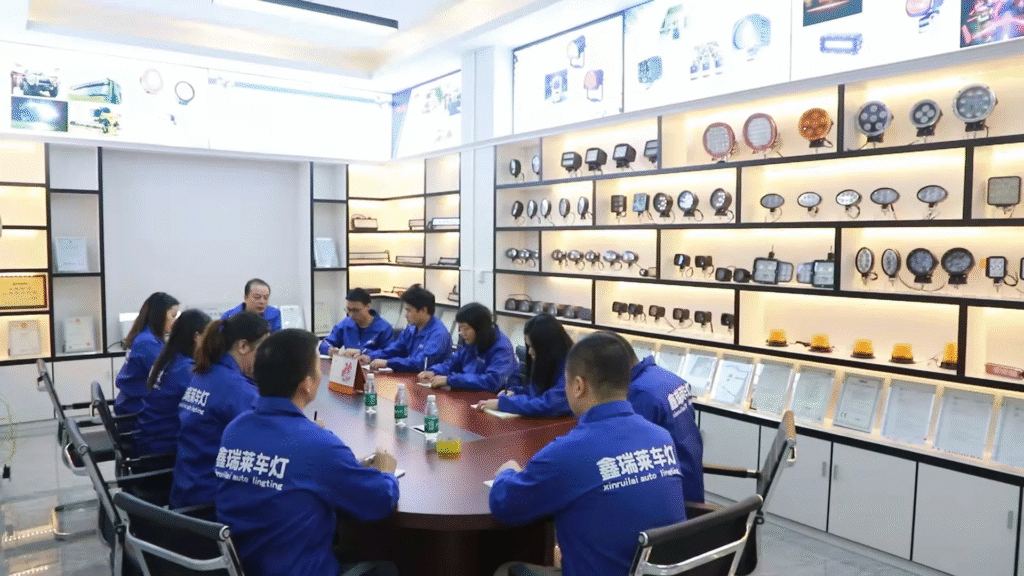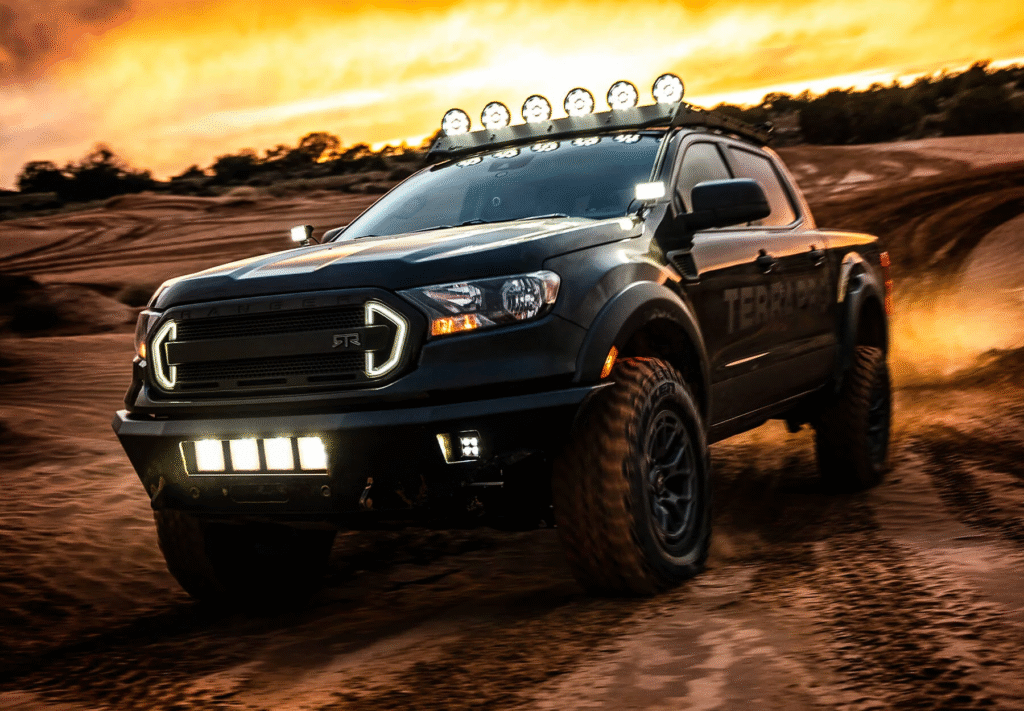If you’ve been thinking about upgrading your vehicle’s lighting, chances are you’ve come across the LED vs HID headlights debate. Whether you’re a weekend off-road warrior, a long-distance truck driver, or just someone who wants better nighttime visibility, the choice between these two technologies can feel overwhelming. Both LEDs and HIDs have their unique strengths — from light output and beam range to energy efficiency and cost.
In this guide, we’ll break down the difference between HID and LED, explain what HID means for headlights, and help you decide which option best suits your driving needs. By the end, you’ll know not only the technical differences but also the practical pros and cons for real-world driving.
| Feature | LED Driving Lights | HID Driving Lights |
| Brightness | Very bright but shorter throw range | Extremely bright with long throw distance |
| Power Usage | Low power consumption | Higher power consumption |
| Lifespan | 30,000–50,000+ hours | 2,000–5,000 hours |
| Warm-Up Time | Instant | 3–10 seconds |
| Durability | Excellent — shock & vibration resistant | Moderate — more fragile bulb construction |
| Cost | Higher upfront cost, lasts longer | Lower cost but shorter lifespan |
Which Should You Choose?
The difference between HID and LED ultimately comes down to your driving style and environment.
- Choose LED if you value durability, energy savings, and instant full brightness.
- Choose HID if you need the brightest possible light with the longest throw distance for open-road driving.
What Does HID Mean for Headlights?

Before diving into the comparison, let’s clarify what HID actually is.
HID stands for High-Intensity Discharge, a lighting technology that produces light by passing an electric arc between two tungsten electrodes inside a bulb filled with xenon gas.
How HID Lights Work
- Electrical arc creation — The ballast sends a high voltage to ignite the gas, producing a bright, intense beam.
- Gas-filled bulb — Xenon gas helps create a daylight-like color temperature.
- Ballast control — Regulates voltage and current to keep light output stable.
Key Benefits
- Outstanding brightness — Ideal for spotting hazards far ahead on highways or trails.
- Long beam throw — Reaches further than most LED setups, making it excellent for high-speed driving.
- Color temperature variety — Available from warm yellow to cool bluish white for different driving conditions.
Understanding LED Driving Lights

LED stands for Light Emitting Diode, a solid-state technology that creates light when current passes through a semiconductor. Unlike HID, LEDs do not require a warm-up period or gas-filled bulbs.
How LED Lights Work
- Direct light emission — Semiconductors produce light instantly when energized.
- Focused beam pattern — Precise optics control the light spread.
- Integrated cooling — Heat sinks or fans prevent overheating, extending lifespan.
Key Benefits
- Instant-on illumination — No wait time, even in cold weather.
- Energy efficiency — Uses less power than HID, reducing strain on your battery.
- Durability — Resistant to vibrations, dust, and moisture, making them perfect for off-road use.
- Long service life — Often lasting 30,000–50,000 hours or more.
Which is More Powerful: HID or LED?

When it comes to raw light output, HIDs generally produce more lumens than LEDs. However, power isn’t just about brightness — it’s about how that light is used.
HID Strengths
- Long throw distance — Perfect for open roads and off-road night drives.
- Broad coverage — Lights up a wide area, reducing dark spots.
- High lumen output — Can outshine many LED setups in sheer brightness.
LED Strengths
- Better short-to-medium range visibility — Ideal for urban and rural driving.
- Focused beam control — Reduces glare for oncoming traffic.
- Consistent light quality — Maintains brightness over time without dimming.
Can I Replace My HID Headlights with LED?
Yes, but there are important considerations before making the switch.
Things to Check
- Housing compatibility — LED bulbs may not fit properly into HID-specific housings without adapters.
- Beam pattern accuracy — Poor-quality LEDs can scatter light and cause glare.
- Legal compliance — Some regions have strict headlight regulations.
- Electrical requirements — LED conversion kits need to match your vehicle’s voltage and wiring.
Tip: Invest in a reputable LED conversion kit designed specifically for replacing HIDs to ensure optimal performance and safety.
Pros and Cons of HID Driving Lights

Pros
- Exceptional brightness — Perfect for long-distance driving and spotting hazards early.
- Wide beam spread — Covers more area than many LED lights.
- Great in adverse conditions — Penetrates fog, rain, and dust effectively.
Cons
- Warm-up delay — Takes 3–10 seconds to reach full brightness.
- Shorter lifespan — Requires more frequent bulb replacements compared to LED.
- Fragility — Sensitive to vibrations, making them less ideal for extreme off-road conditions.
- Higher energy draw — Uses more power, which can impact battery life if used excessively.
Conclusion

Choosing between LED vs HID headlights isn’t just about picking the brightest option — it’s about finding the one that fits your specific needs.
HIDs excel in long-distance visibility and all-weather performance, while LEDs shine in durability, efficiency, and instant response. If you drive mainly in rural or off-road settings where seeing far ahead is crucial, HID may be the better choice. But if you want a long-lasting, low-maintenance solution for everyday use, LED could be the winner.
No matter which you choose, investing in high-quality lights from a reputable led light supplier will ensure safer night driving and a better overall experience.
FAQs
FAQs About LED vs HID Headlights
1. Are LED headlights better than HID?
It depends on your priorities. LEDs last longer, use less power, and offer instant brightness, while HIDs are typically brighter and have a longer beam throw.
2. Do HID lights last longer than LED?
No, LED headlights generally last significantly longer — often up to 50,000 hours — compared to HID’s average lifespan of 2,000–5,000 hours.
3. Can I switch from halogen to HID or LED?
Yes, but you may need specific conversion kits and proper housing adjustments to maintain correct beam patterns and avoid glare.
4. Which is better for off-road driving — HID or LED?
HID provides excellent long-range visibility, ideal for spotting obstacles far ahead. LEDs are more durable and handle vibration better, making them a solid choice for rugged off-road terrain.





